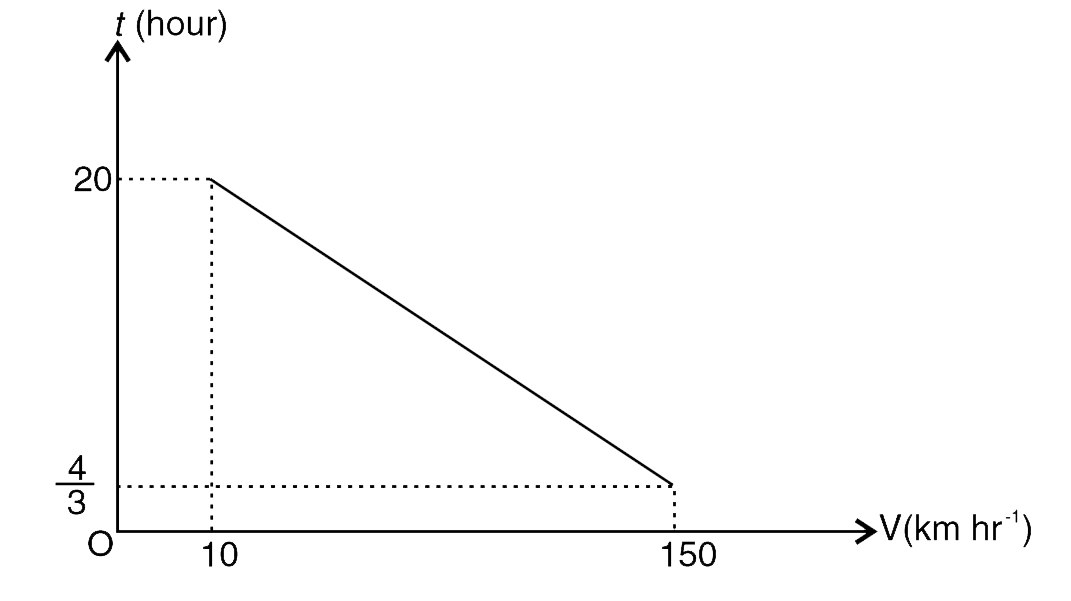A star having radius R has a small planet revolving around it at a distance d (>>R). The star and the planet both behave like black bodies and radiate maximum amount of energy at wavelength λs and λp respectively.
(i) Find d in terms of other given parameters.
(ii) Show that λp>>λs
The correct Answer is:(i) d=R2(λp(λs)2
Step by step video, text & image solution for A star having radius R has a small planet revolving around it at a distance d (gtgt R). The star and the planet both behave like black bodies and radiate maximum amount of energy at wavelength lambda_(s) and lambda_(p) respectively. (i) Find d in terms of other given parameters. (ii) Show that lambda_(p)gtgtlambda_(s) by Physics experts to help you in doubts & scoring excellent marks in Class 11 exams.
Topper's Solved these Questions
Similar Questions
Two lead balls of mass m and 2 m are placed at a separation d. A third ball of mass m is placed at an unknown location on the line joining the first two balls such that the net gravitational force experienced by the first ball is 6Gm2d2 . What is the location of the third ball?
02:54View SolutionA car manufacturer usually tells a optimum speed (V0) at which the car should be driven to get maximum mileage. In order to find the optimum speed for a new model, an engineer of the car company experimented a lot and finally plotted a graph between the extreme time t (defined as number of hours a tank full of petrol lasts) vs the constant speed V at which car was run.

(a) Calculate the optimum speed V0 for this new model.
(b) If the fuel tank capacity of this car is 50 litre, what maximum mileage can be obtained from this car?01:44View SolutionA planet is revolving around a star with a time period of 2 days. If radius of star trippled keeping same. Planet will revolve with these changed parameters. Select correct open (s) :
03:50View SolutionThree energy levels P,Q,R of a certain atom are such that E_(P)ltE_(Q)ltE_(R) . If lambda_(1),lambda_(2) and lambda_(3) are the wave length of radiation to transition RtoQ , QtoP and Rto P respectively . The correct relationship between lambda_(1),lambda_(2) and,lambda_(3) is
07:05View SolutionA planet of radius R_(p) is revolving around a star of radius R^(**) , which is at temperature T^(**) . The distance between the star and the planet is d. If the planet's temperature is f T^(**) , then f is proportional to
04:58View SolutionA planet is revolving around a star in a circular orbit of radius R with a period T. If the gravitational force between the planet and the star is proportional to R^(-3//2) , then
03:20View SolutionLet lambda_(p) and lambda_(d) be the decay constants of the parent and the daughter nuclei.If N_(P) and N_(d) be the number of parent and daughter nuclei at time t the condition that the daughter nuclei become constant is : 1) lambda_(p)N_(p)=lambda_(d)N_(d) 2) lambda_(p)N_(d)=lambda_(d)N_(p) 3) lambda_(p)lambda_(d)=N_(p)N_(d) 4) None of these
06:31View SolutionPower radiated by a black body at temperature T1 is P and it radiates maximum energy at a wavelength λ1. If the temperature of the black body is changed from T1 to T2 , itradiates maximum energy at a wavelength λ1/2.The power radiated at T2 is
08:45View Solutionयदि किसी इलेक्ट्रॉन और फोटॉन की ऊर्जा समान (E ) है और उनकी तरंगदैर्ध्य क्रमशः λe तथा λp हो तो इनके बीच संबंध होगा -
03:31View Solutionदो गोलाकार तारों A तथा B द्वारा कृष्णिका (ब्लैक बॉडी) विकिरण उत्सर्जित किया जा रहा है | A की त्रिज्या B की त्रिज्या की 400 गुनी है तथा A से उत्सर्जित ऊर्जा, B से उत्सर्जित ऊर्जा की 104 गुनी है | उनकी उन तरंगदैर्ध्यों λA और λB, जिन पर उनके विकिरण व्रक उच्चतम है, के अनुपात (λAλB) का मान है
04:36View SolutionA small planet is is revolving around a very massive star in a circular orbit of radius r with a period of revolution. T is the gravitational force between the planet and the star is proportional to r ^(-5//2) ,then T will be proportional to
02:07View SolutionThe power radiated by a black body is P and it radiates maximum energy at wavelength, λ0. If the temperature of the black body is now changed so that it radiates maximum energy at wavelength 34λ0, the power radiated by it becomes nP. The value of n is
04:09View SolutionIf the wavelength for maximum emission related to the stars lambda_(1) And lambda_(2) Ho and their temperature respectively T_(1) And T_(2) If the ratio ((lambda_(1))/(lambda_(2))) What will be the value of?
View Solutionयदि कोई छोटा ग्रह किसी विशाल तारे के चारों ओर R त्रिज्या के किसी वृत्ताकार कक्ष में T परिक्रमण काल के साथ घूम रहा है। यदि ग्रह तथा तारे के मध्य गुरुवीय बल R−5/2 के समानुपाती है, तो T समानुपाती होगा-
View SolutionThe power radiated by a black body is P and it radiates maximum energy around the wavelength lambda_(0) . Now the temperature of the black body is changed so that it radiates maximum energy around wavelength lambda_(0)//2 . The power radiated by it will now increase by a factor of
View Solution

